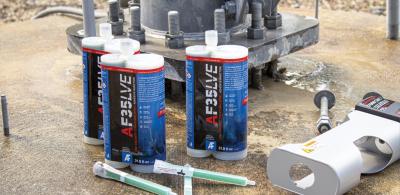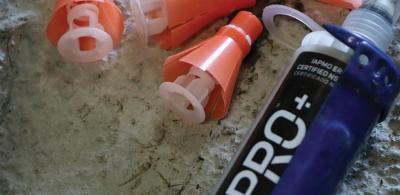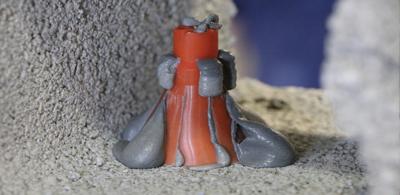Adhesive Anchoring
AF35LVE: Offering Up Tower Solutions
AF35LVE is a two-component, low viscosity epoxy designed for deep embedment of anchor rods in large diameter holes due to its zero shrinkage and longer working times. AF35LVE has a thixotropic gel-like consistency, and it flows when under pressure and gels once injection stops.
Epoxy: Building America's Infrastructure
No matter where you look, epoxy – or chemical anchoring – may have been in the forefront of that job’s success. From updating historical buildings in New York to providing a strong base for towers in Kansas, epoxy has been used in a multitude of applications.
Chemical Anchoring: What Is It and Why Use It?
When working with concrete in high-load structural applications, your choice of fastening products matters. Not just from an engineering and compliance point of view, but also for structural safety and integrity. For this, your choice should be a chemical anchor.
The Solution to Anchoring into Terracotta
To successfully anchor into terracotta, you’ll require a fastener that will provide a secure hold while not damaging the material – enter the umbrella insert.
Importance of Proper Storage and Temperature Considerations | Chemical Anchors
As it begins to get into the warmer seasons, it is crucial to understand how your chemical anchors can be affected. Not storing properly can result in poor performance.
How To Use The Allfasteners Adhesive Anchor Calculator
It is important to determine the precise quantity of epoxy required for your project. Learn how to use the Allfasteners adhesive anchor calculator.
Revolutionizing Projects with the Allfasteners New Adhesive Anchor Calculator
Allfasteners has released a new adhesive anchor calculator designed to help users determine the exact amount of epoxy to purchase for their application. The best part...it's completely FREE!
How to Choose the Best Epoxy for Installing Threaded Rod
This guide will help explain the factors for choosing the right epoxy for threaded rod anchoring.
Anchoring Into Cinder-Crete
Use this helpful guide to better understand how to anchor into cinder-crete.










